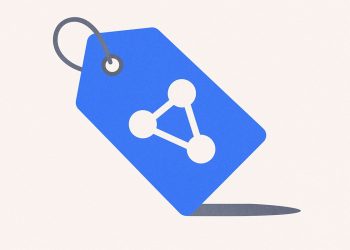In 2025, the use of AI agents in advertising is delivering tangible, double-digit efficiency gains that are moving beyond industry hype. Agencies like Mediassociates report significant time savings by using AI agents to draft audience segments and identify campaign anomalies, according to its Mediassociates News archive. This shift allows media planners to dedicate 25% less time to manual data entry and 30% more time to high-value strategic work. This analysis details how AI agent workflows enhance campaign performance, preserve institutional knowledge, and set new competitive standards.
How AI Agents Are Reshaping Media Planning
Agencies are leveraging AI agents to automate time-consuming tasks like audience research, keyword clustering, and performance monitoring. This allows human planners to focus on strategy and final decision-making, leading to faster campaign launches, improved ROI, and more resilient media plans by catching issues in real time.
Mediassociates began integrating proprietary AI agents in 2024, using the tools to process campaign briefs, analyze historical data, and generate proposed media mixes in minutes. However, human oversight remains critical. As CEO Jeff Larson stated in a MediaPost interview, “AI-powered tools can optimize campaigns, but real strategic media planning requires human insight.” While human leads provide final approval, the AI agent handles the preliminary heavy lifting.
Key automated tasks at Mediassociates now include:
– Drafting audience segments from first-party and syndicated data
– Recommending keyword bundles for search and retail media
– Flagging cost spikes or delivery gaps in real time
– Compiling competitor creative for side-by-side analysis
The impact is measurable: planners have seen a 14% lift in return on ad spend (ROAS) across initial 2025 test campaigns. Crucially, the agents do not execute media buys directly; they generate a ready-to-import insertion order that a human buyer must approve.
Industry-Wide Adoption and Competitive Edge
The trend extends beyond a single agency. Jellyfish reportedly reduced campaign launch times by 65% and cut unit costs by 30% by implementing agentic bidding logic, according to Superside research. Bionic’s 2024 pilot survey found similar gains, with 78% of agencies crediting agents with faster cross-channel budget reallocations.
This rapid adoption fuels a market that reached $5.4 billion in 2024 and is expanding at a 45.8% annual clip. Gartner projects that agents will influence or automate half of all business decisions by 2027, signaling that early investment provides a clear competitive advantage in a complex media landscape.
From Troubleshooting to Transaction Automation
While agents excel at analysis, the industry remains cautious about granting them transactional authority. Programmatic agents can already evaluate ad impressions against brand-safety and carbon benchmarks before a bid, but Mediassociates maintains a guarded stance. Tim Lathrop, VP of Platform Digital, stresses that direct spending authority remains a “long-term process.” In practice, the agency’s agents only alert teams to pacing variances and suggest budget shifts, with a human trader making the final click.
A November 2024 survey from Warmly.ai confirms this trend: while 85% of enterprises use at least one agent, fewer than 10% permit autonomous financial transactions, citing governance and executive AI literacy as primary barriers. The evolution from assistive to autonomous roles is clear:
| Capability | 2025 Agent Role | Expected 2027 Role |
|---|---|---|
| Brief summarization | Fully automated | Fully automated |
| Media mix modeling | Agent proposes – human signs off | Agent proposes – human signs off |
| Real-time anomaly fixes | Agent recommends | Agent executes within guardrails |
| Financial settlement | Human only | Hybrid agent-initiated with escrow controls |
Talent and Knowledge Transfer Effects
The adoption of AI agents is transforming agency roles and knowledge management. As software automates repetitive diagnostic work, junior analysts are shifting to higher-value insight and strategy roles. Mediassociates has found that AI agents accelerate onboarding, as new hires can query a centralized knowledge graph for past campaign data instead of digging through shared drives.
Simulmedia reports a similar benefit, where its planning bot not only tests creative variations but also logs the results to inform future campaign briefs. This creates a powerful feedback loop, pressuring agencies to codify their proprietary strategies into these systems. Those who succeed build a compounding data advantage, while competitors remain stuck with manual data analysis. The next frontier involves aligning these intelligent systems with evolving privacy regulations and ensuring transparent audit trails for financial reconciliation.
How are agencies actually using AI agents in media planning today?
AI agents are automating repetitive tasks and surfacing data-driven recommendations, but humans still sign every check. At Mediassociates, proprietary bots have run for more than a year, ingesting client briefs and returning audience-segment suggestions, competitor analyses, and keyword lists within minutes instead of the hours a planner once spent in spreadsheets. The agency’s VP of Platform Digital, Tim Lathrop, stresses that spending decisions remain human; the machines only speed up the homework. This mirrors the wider agency world where 78 % of firms already use AI in marketing, yet fewer than 2 % let the algorithms touch the actual budget.
What measurable efficiencies are early adopters reporting?
Mediassociates declines to publish hard figures, but peer shops that deploy similar agentic workflows show campaign-launch times shrinking 65 % and operating costs dropping 30 %. Jellyfish, for example, credits its AI buyers with a 25 % capacity boost on top of the faster launches. The efficiencies come from:
– 24/7 anomaly detection that reallocates under-performing spend before a human media supervisor has finished coffee
– Cross-channel data synthesis that used to require three separate analyst tools
– Instant creative-variant testing that lets planners approve the best mix rather than build it from scratch
Why is the “money side” still off-limits for AI agents?
Two words: risk and regulation. Industry forecasts say AI agents will automate 50 % of business decisions by 2027, yet financial-transaction bots must clear higher hurdles:
– Brand-safety governance – no chief marketing officer wants headlines about a runaway bot that bought millions of impressions on an extremist site
– Audit trails – finance teams demand transparent logs for every dollar, something black-box algorithms still struggle to provide
– Publisher distrust – many premium sites refuse to let anonymous bot bids into their auctions until liability questions are resolved
Lathrop’s timetable reflects this reality: “The money side will be more of a long-term process. Now it’s [about] how we can build efficiencies around media planning and troubleshooting.”
How does institutional knowledge stay inside the agency when AI does the first draft?
Successful shops treat their agents like junior staff that must be trained and re-trained:
– Planners tag every recommendation “approved,” “edited,” or “rejected,” feeding the system labeled outcomes that sharpen future suggestions
– Campaign wrap-up reports are auto-parsed into structured data, not PDF graveyards, so next year’s bot remembers what worked
– Senior buyers periodically shadow-bot – running parallel manual analyses to catch drift or bias before it contaminates client plans
Jeff Larson, CEO of Mediassociates, puts it bluntly: “AI-powered tools can optimize campaigns, but real strategic media planning requires human insight. The best future isn’t AI vs. people, but AI AND people.”
What should clients ask before letting an agency deploy AI agents on their account?
- Who owns the training data? Ensure your campaign insights don’t migrate to competitors sharing the same platform.
- Can we see the audit log? Require a plain-English dashboard that shows why the bot recommended each site, keyword, or bid.
- What happens when the bot misfires? Demand a rollback protocol and a service-level agreement that caps financial exposure.
- How will you keep my brand safe? Ask for the block-list update cadence and human review checkpoints before any purchase.
- Where do humans add value? Push for a hybrid model where planners spend freed-up hours on strategy and creative context, not on reconciliation busywork.
Agencies that can answer these questions transparently are the ones turning today’s efficiency gains into tomorrow’s competitive edge – without keeping their clients awake at night.



















